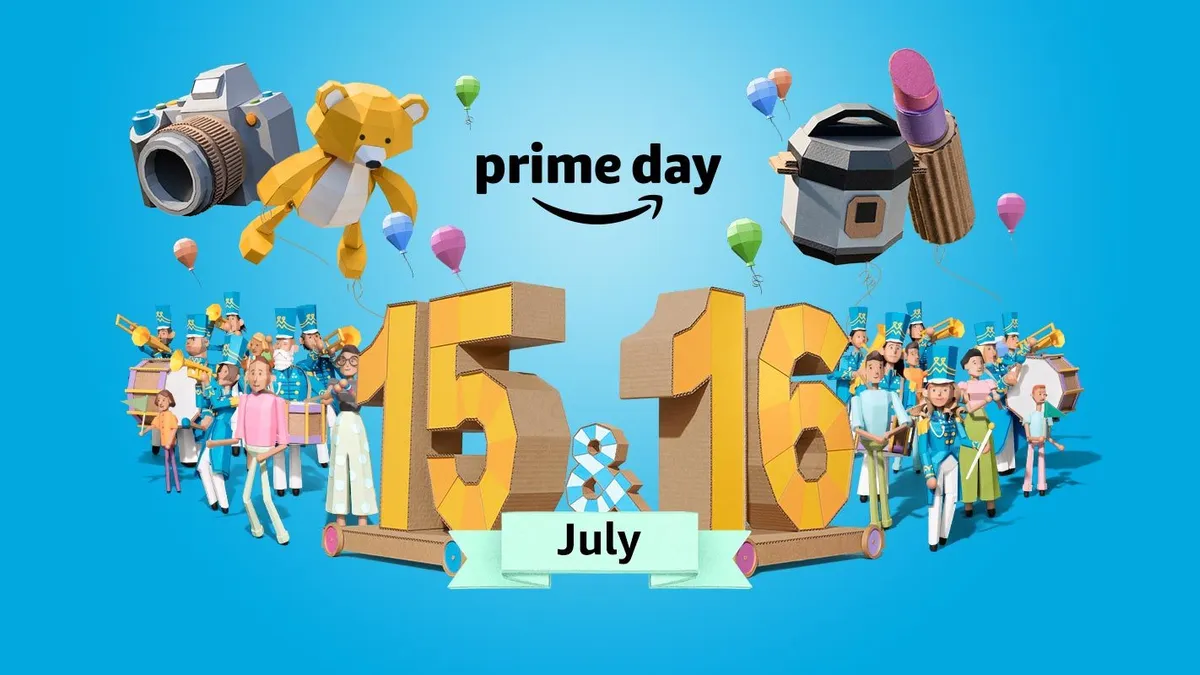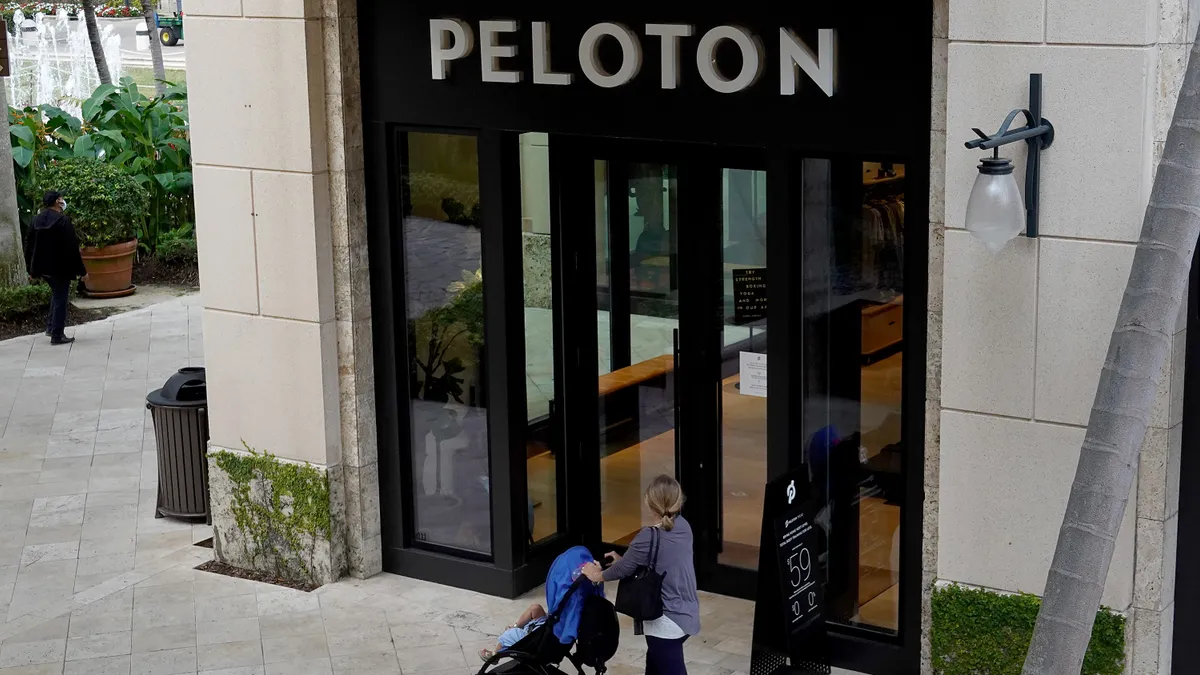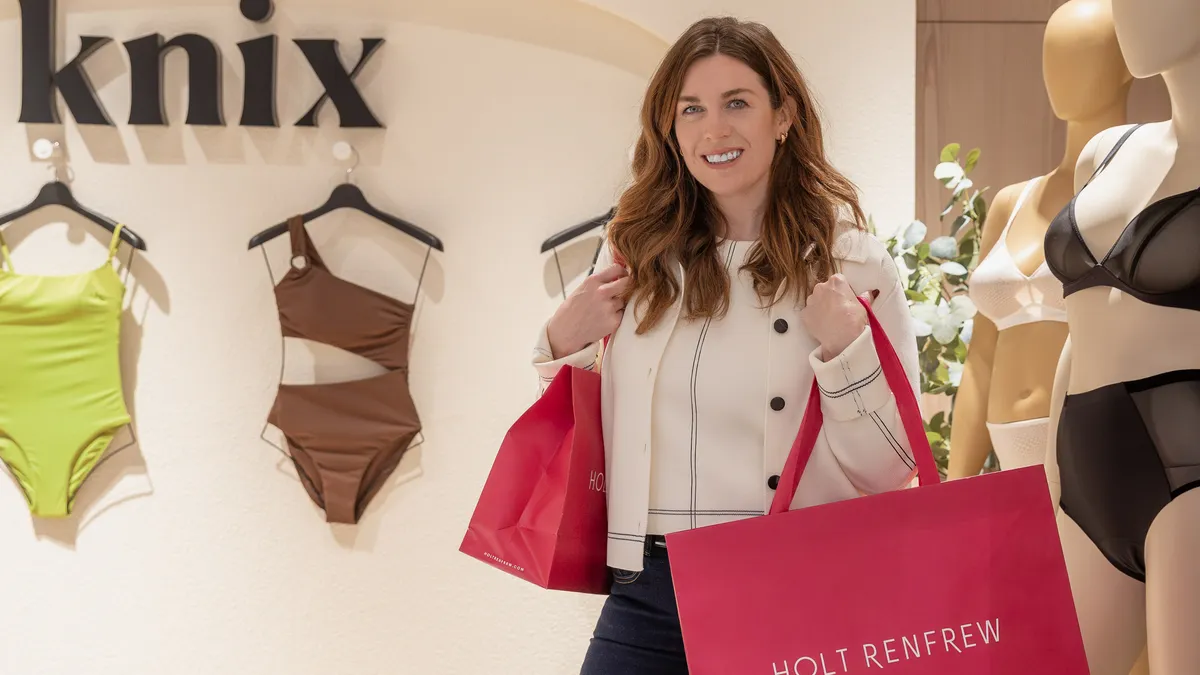Amazon last month announced that its fifth annual 2019 Prime Day will run on July 15 and 16 and will last 48 hours, the longest yet. Last year, the event was hampered by glitches that stymied shoppers from exploring the blockbuster sale just as it got going. While that may not be easily forgotten this year, Amazon has no doubt taken steps to avoid such a snafu, and, in any case, the day's price cuts are primed, so to speak, to be too good to resist.
Rivals are joining in, and deals are already launching from every retail corner. Here are a few things to keep in mind this year.
1. Almost everyone shops on Prime Day
It's not quite Black Friday yet, but a majority of U.S. consumers shop Amazon's own private sales event, which, as always, is open only to Prime members. Those without a membership can start a 30-day free trial to participate in the sale.
That restriction isn't holding all that many people back. Three-quarters of the 1,000 U.S. consumers aged 18 to 64 surveyed by Adlucent said they are considering shopping on Prime Day this year.
More Prime members are paying attention, and ponying up more dollars. Profitero found that 76% of U.S. Prime members are planning to shop the event, up from 63% last year, and that 56% of U.S. Prime members who bought something on Amazon last Prime Day expect to spend even more this year. User-generated content platform Bazaarvoice found that nearly one-in-five consumers surveyed plan to spend $300 on Prime Day, and 60% plan to spend more than $100.
"It's no longer new, but that also means that people expect it," Alice Fournier, vice president of e-commerce and digital at Kantar Consulting, told Retail Dive in an interview. "So while it used to be more of a surprise, now it's about meeting expectations — and expectations that have become increasingly high. Prime Day started as a retail-focused holiday, and that's still the core of it, but now it's also a way to bring value and to present Prime shoppers with everything that Prime has to offer. It's much more of a loyalty play at this point."
2. Deals are the draw
While Amazon for the first time is promoting Prime Day with a live concert July 10 featuring Taylor Swift, Dua Lipa, SZA and Becky G that will stream live to Prime members, the real draw of the sales event is deals.
Low prices and free shipping are the reasons consumers gave Adlucent for shopping Prime Day, according to research emailed to Retail Dive. And in its own Prime Day report, Profitero found that 62% of U.S. Prime members agree that "Prime Day deals live up to the hype."
And is there ever hype. The e-retailer is boasting that this year will include "more than one million deals globally, including the biggest Prime Day deals ever on Alexa-enabled devices," as well as deals exclusive to Whole Foods, and deals through special partnerships with the likes of Nickelodeon, children's apparel brand Hanna Andersson, and a range of products sold by stars like Kristen Bell, Kobe Bryant, Zac Brown, Rhett & Link, JoJo Siwa, Will and Jaden Smith, and Mark Wahlberg.
But it's still about the price tag, and the right price will get 56% of U.S. shoppers to buy something they weren't even looking for, according to Profitero.
3. This year is a test for Alexa and Prime
Signs are emerging that growth in Prime's membership is slowing, which could be why Amazon sped up its free shipping perk to one day a few weeks ago. Even before that, Amazon was looking to expand beyond its high-earning base by enticing lower-income consumers like students and those on federal aid programs into the program with specially priced versions.
Prime Day could help expose what the reality is for Prime's future, at least in the U.S.
"I'm looking for any sign of Prime membership fatigue on the horizon because for a couple of years now there have been a handful of consumer panel surveys and studies that are definitely not conclusive but suggest the growth of Prime membership households might be decelerating," Profitero Senior Vice President of Strategy and Insights Keith Anderson told Retail Dive in an interview. "If Prime Day is all about getting people to try out Prime and that's not working, that's notable to me."
As with previous Prime Days, at least since the launch of the Echo, Amazon has offered deep discounts on Alexa-enabled devices and has also launched new ones, Anderson said, noting their potential for locking in Prime orders. But the sale could be a test for them, too, in light of research from PC Magazine finding that 39% of those expecting to shop Prime Day express "privacy issues will discourage them from purchasing Alexa-enabled products."
4. Amazon has new tricks up its sleeve
Indeed, the company has already sliced $100 off one of its Fire TVs in what it's calling an early Prime Day sale. It could be that the e-tailer is hoping to get those devices installed into shoppers' homes ahead of the two-day event.
"I noticed the Fire TV shopping app was updated last week," Profitero's Anderson said. "It seemed like a pretty substantial update to me and the timing seemed curious. I'm also curious to see if they do anything novel or interesting with the QVC style-live programming."
That would be Twitch, and Amazon is certainly plugging that programming in a blog post as "unlike anything you've ever witnessed…but, like, in a good way." In two 12-hour broadcasts , one on each day of the sale, the channel (with yet-to-be named hosts), will spotlight deals on "everything from games and gaming peripherals, to kitchenware and electronics."
5. Fakes could be an issue
Prime Day's surge in sales could lead to a surge in fakes, especially with the many timed deals and rushed purchases.
Amazon's problem of counterfeits and fake reviews remains stubborn. For the first time, in its end-of-year report to the Securities and Exchange Commission, the e-commerce giant listed counterfeit sales as a risk factor to its business and noted that it's difficult to prevent sellers from conducting those sales. The growth of its Marketplace (the percentage of goods sold there has reached 58%) isn't helping, in part because Amazon is reportedly leaving much of the policing to brands, according to Wired magazine.
That perception has reached consumers as well. Bazaarvoice found that 44% of shoppers say that Amazon's recent issues with fake product reviews will impact their participation in Prime Day shopping, with 37% saying they'll be more cautious when they shop at Amazon, and 7% staying away completely.
6. Prime Day now launches back-to-school
The breadth of merchandise that Twitch brags about in its Prime Day blog post is no joke — Profitero in its report calls Prime Day "a bonanza for every category, from gadgets to grocery." Last year, Amazon's Prime Day electronics sales in the U.S. spiked 215%, and this year 71% of U.S. shoppers plan to shop for gadgets, according to that report.
That may be because electronic purchases have become a major element of back-to-school shopping, and Prime Day is pretty much the unofficial launch of the back-to-school season in the U.S. now. Deals site Retailmenot found that three time periods — Prime Day, the first weekend in August and Labor Day weekend — are now the top shopping times for school prep. More than half of K-12 and college back-to-school shoppers told the National Retail Federation and Prosper Insights & Analytics in a survey recently that they plan around such times. Amazon is ready for them now, with its Happy School Year online store already launched.
Some Prime Day shoppers think even further ahead: Bazaarvoice found that almost half (48%) of Prime Day shoppes plan to look for holiday items.
7. Whole Foods is going to help
Among the categories getting a boost from Prime Day is grocery, according to Profitero, which found that almost one in four U.S. shoppers are planning to grab groceries online on that day.
With just 11% of consumers reporting that they bought fresh foods from Amazon in the past year, but 82% making those purchases in a grocery store, Amazon is "smart" to promote special Prime Day deals at Whole Foods, according to an email from Walker Sands based on its recent Future of Retail report. The e-commerce giant is already at it, with "early Prime Day" savings on some private label grocery items.
Amazon also has some proof from last year, when its grocery sales rose 25% on Prime Day.
8. Whose Prime Day is it anyway?
Calling Prime Day a summertime Black Friday may be a bit overselling things, considering how massive post-Thanksgiving sales are and how many retailers participate in that blockbuster holiday sales event.
But rivals aren't letting Amazon have Prime Day to itself. RetailMeNot predicts that 250 retailers will participate in Prime Day, a massive 825% increase from the 27 retailers who did so in 2016.
While Profitero's research shows that almost all of the U.S. Prime members planning to shop on Prime Day will do so on Amazon, more than a third will also shop other e-retailers and 17% will actually go to physical stores.
That last fact benefits rivals, at least to some extent: Prime Day shoppers plan to go to Walmart (44%), Target (40%), Best Buy (24%) and Macy's (18%), saying that they shop those other retailers because they find better sales (32%) and because they have physical locations nearby (31%), according to Bazaarvoice.
Even more so than physical locations, though, might be the fact that rival sales require no membership. Target has already trumpeted that loudly for a sale that has a lot in common with Prime Day, from its timing to its deals.
That could prove to be critical, according to Kantar's Fournier.
"At its inception and until not long ago, Prime membership was $79, and that was very much anchored in free shipping," she said. "Free shipping was such a novel idea, but now expectations are now well beyond that and the fee is higher. The real question is how many shoppers get enough value to stick within the Amazon ecosystem as other retailers present their deals without membership fees."
The rival sales are really a defensive play, according to Profitero's Anderson, and are unlikely to garner new customers the way Prime Day does for Amazon.
"As long as Walmart, Target or anyone like them offers roughly similar convenience but unbundles all the perks that come with an Amazon Prime membership, that gives households a reason to say 'we don't need to sign up for Prime,'" he said. "But I still have not seen any other retailer get creative or serious about a hook to get those shoppers to come back and pay list price later. They're basically contracting their margins without gaining new shoppers."






















